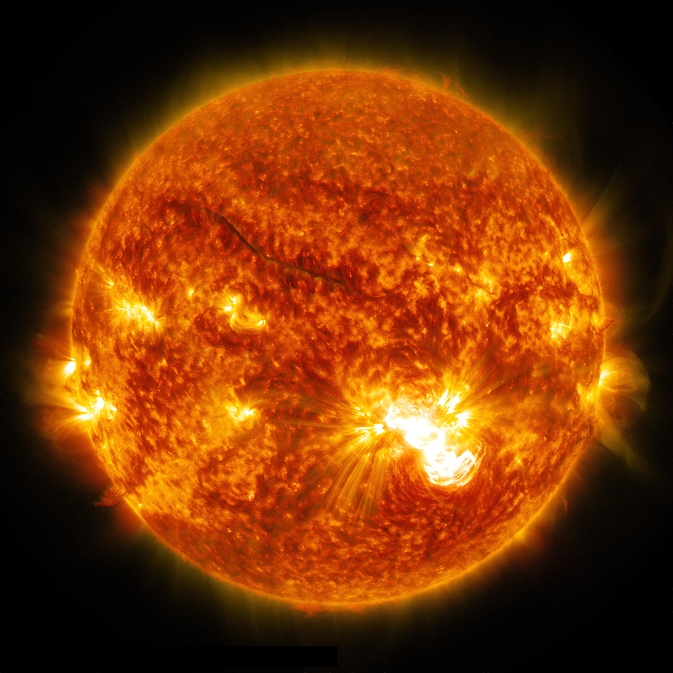Monster Sunspot May Unleash Powerful Solar Flares
By Calla Cofield, Staff Writer | Space.com
The largest sunspot to appear on Earth’s nearest star in more than two decades is once again pointed at the planet, and it will likely kick-start solar storms, NASA scientists say.
The massive sunspot, previously known as Active Region 12192, was turned toward Earth in October and early November, but rotated out of view. While it was on the Earth-facing side of the sun, the sunspot did not produce any coronal mass ejections — hot bursts of material ejected into space at 4 million mph (6.4 million km/h) — which have the potential to damage satellites and power grids. Now the active region has rotated back around to face Earth again, and although the sunspot has shrunk in size, it will likely be disruptive, NASA scientist Holly Gilbert told Space.com during a video interview about the massive sunspot.

“This time around, it’s more likely to have some coronal mass ejections associated with it, even though the solar flares might be smaller,” said Gilbert, chief of the Solar Physics Laboratory at NASA’s Goddard Space Flight Center in Maryland. “We have a good idea, based on the structure of that magnetic field and the sunspot, that it’s very possible that it will create some midlevel flares.” [The Biggest Solar Flares of 2014]
Video: NASA scientist Holly Gilbert Space.com Interview
Sunspots are blemishlike regions on the sun where magnetic fields become very tightly bundled. The magnetic fields block light and heat from passing through the sunspot region, causing them to appear dark compared to the surrounding area.
Video: NASA | Five X-class Flares from Oct. 19-27, 2014
AR 12192 has been renamed AR 12209 now that it is once again on the Earth-facing side of the sun. The sunspot was out of view of the Earth for about two weeks before reappearing. It is still large enough for 10 Earths to fit inside it, Gilbert said. In terms of size, it ranks 33rd largest of 32,908 active regions recorded since 1874, and it’s the largest sunspot recorded since 1990.
